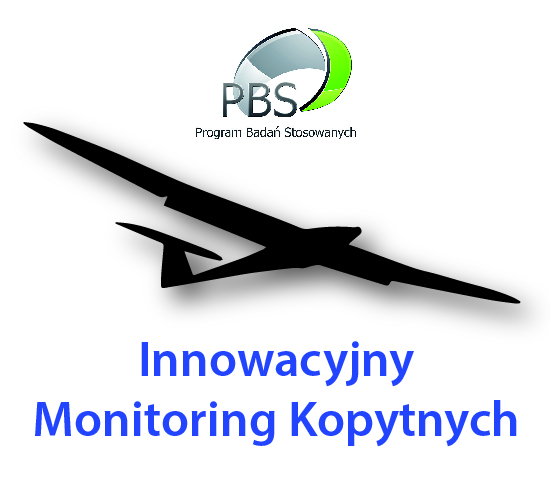Proceedings of the SECOND MEETING OF THE EUROPEAN ORNITHOLOGISTS' UNION Gdańsk, 15-18 September 1999 Supplement Tomiałojć L. 2000. An East-West gradient in the breeding distribution and species richness of the European woodland avifauna. Acta Ornithol. 35: 3-17. | | Museum of Natural History, University of Wrocław, ul. Sienkiewicza 21, 50-335 Wrocław, POLAND, e-mail: This email address is being protected from spambots. You need JavaScript enabled to view it. Abstract. In spite of environmental uniformity of the European Plains, a conspicuous east-west gradient in the woodland avifauna and breeding bird community composition has been revealed. The species richness in the western woodland avifauna is lower by 32-36% than in the respective eastern samples (n = 120-127 species). Apart from being poorer in species, western communities tend to contain a higher proportion of species which develop dense populations. These features may result from past - mostly postglacial - natural events, from a secondary gradient in the intensity of human impact or from both of them. The data at hand provide evidence for a strong prevalence of the second factor. In view of the mostly anthropogenic character of the differences described, many west-European data can hardly be used as models of the natural patterns in studies of breeding bird ecology. New continent-wide comparative research is necessary to better control for anthropogenic bias in field data. For valid future pan-continental comparisons of bird communities a few large patches of near-pristine woodland should be preserved in the East, as well as restored in the West. Bird ecology studies need also a better co-operation with the archaeozoological and historical research to take into consideration past conditions which could also have influenced the present-day life patterns of European birds. Key words: bird distribution, species richness, anthropogenic changes, E-W gradient | |
Symposium: Waterfowl Studies Mark M. Rehfisch. 2000. Waterfowl Studies: a European perspective at the end of the 20th Century. Acta Ornithol. 35: 21-23. | | British Trust for Ornithology, The Nunnery, Thetford, Norfolk IP24 2PU, UNITED KINGDOM, e-mail: This email address is being protected from spambots. You need JavaScript enabled to view it. | |
Rehfisch M. M.1, Austin G. E.1, Clark N. A., Clarke R. T.1, Holloway S. J.1, Yates M. G.3, Durell S. E. A. le V. dit2, Eastwood J. A.3, Goss-Custard J. D.2, Swetnam R. D.3, West J. R.4 2000. Predicting densities of wintering Redshank Tringa totanus from estuary characteristics: a method for assessing the likely impact of habitat change. Acta Ornithol. 35: 25-32. | | 1 British Trust for Ornithology, The Nunnery, Thetford, Norfolk IP24 2PU, UNITED KINGDOM, e-mail: This email address is being protected from spambots. You need JavaScript enabled to view it. 2 Institute for Terrestrial Ecology, Monks Wood, Abbots Ripton, Huntingdon, Cambs PE17 2LS, UNITED KINGDOM 3 Institute for Terrestrial Ecology, Furzebrook Research Station, Wareham, Dorset BH20 5AS, UNITED KINGDOM 4 School of Civil Engineering, University of Birmingham, Edgbaston, Birmingham B15 2TT, UNITED KINGDOM Abstract: The UK's estuaries are internationally important for wintering waterfowl and yet these habitats are subject to a range of pressures. For example, some 88% of them have been affected by landclaim. This stress to estuaries will be compounded by global climate change, which will lead to sea level rise. It would be valuable, therefore, to be able to predict the likely impact of such pressures on waterfowl using estuaries. This paper presents a method, based on environmental variables that can easily be collected, which allows the effect of habitat change on densities of wintering waterfowl to be predicted for individual estuaries. The application of the methodology is demonstrated in detail for Redshank. Waterfowl counts were carried out two hours either side of low tide over two winters at 27 estuarine sites in Britain. The sediment classification was obtained from the interpretation of airborne or satellite thematic imagery. The morphology of each site was measured largely from maps. A combination of estuary length, estuary width, tidal range and longitude describe 87% of the variance in the whole estuary Redshank densities. A model based on sediment, the proportion of mud in estuaries, explained 48% of the variance. The suspected reasons behind the higher predictive potential of the former model are discussed. Two examples of the use of these models in predicting the likely effects of human developments on waterfowl populations are demonstrated. Further development of the models is suggested which would allow them to be applied to an important conservation issue, global climate change. Key words: Redshank, Tringa totanus, waterfowl, habitat loss, empirical modelling
| |
Stempniewicz L., Goc M., Bzoma S., Nitecki C., Iliszko L. 2000. Can timing and synchronisation of breeding affect chick mortality in the Great Cormorant Phalacrocorax carbo? Acta Ornithol. 35: 33-39. | | Department of Vertebrate Ecology & Zoology, University of Gdańsk, Legionów 9, 80-441 Gdansk, POLAND, e-mail: This email address is being protected from spambots. You need JavaScript enabled to view it.. Abstract. In 1996, following a relatively severe and prolonged winter, Great Cormorants started to breed at the Kąty Rybackie colony (NE Poland) one month later than in 1995 but breeding finished at the same time in both years. The estimated total food consumption of the Cormorants was lower during the shorter and more synchronised 1996 breeding season (737 tonnes) than in 1995 (805 tonnes) despite the larger population present in 1996 (5929 pairs) than in 1995 (4942). However, during the period of peak energy need in June the estimated total daily food consumption of Cormorants present in the colony was about 2 tonnes higher in 1996. In June 1996, after a couple of windy days, 24.3% of chicks died and the total fledging success was lower (2.19 fledglings/nest) than in 1995 (2.45). The observed mass chick mortality could be due to the combined effect of strong breeding synchronisation, decreased food availability, and increased costs of foraging due to strong winds. Large breeding colonies of Cormorants can only function successfully when the suitable breeding period is prolonged and breeding can start early. Long-term climate change due to global warming could have favoured the observed Cormorant population increase during the last decades and its expansion into NE Europe. Asynchrony could be adaptive towards alleviating the food requirements of both individual broods and the whole colony. Key words: Great Cormorant, Phalacrocorax carbo sinensis, breeding synchronisation, chick mortality | |
Havrylenko V. 2000. The potential of "ecological corridors" for waterfowl migrating through the northern Black Sea. Acta Ornithol. 35: 41-44. | | F. E. Falz-Fein Biosphere Reserve "Ascania Nova", Frunze 13, 75230 Ascania Nova, Chaplynka District, Kherson Province 75 230, UKRAINE Abstract. The Pontic route that passes along the northern shores of the Black and Azov Seas is an important migration routes for birds. The Ascania Nova and Danube Biosphere Reserves, the Azov-Sivash National Park and the Lake Sivash and Karkinit Bay Ramsar Sites are the largest protected natural territories on this migration route. They provide favourable conditions for up to 1 500 Red-breasted Geese, 57 000 Cranes, 560 000 White-fronted Geese, 5 000 Mute Swans and many other waterfowl species that present problems for agriculture in the littoral areas. The reserves do not abut and thus the birds concentrated in the reserves daily have to fly up to 40 km between reserves. To guarantee the safety of these internationally important bird populations it is proposed that an ecological corridor be created where wildfowling would be restricted, international aid would be provided to help farmers sustain any agricultural losses due to the birds, and extensive educational work would be carried out. Key words: bird migrations, biosphere reserves, ecological corridor, protection of birds | |
Švažas S., Stanevičius V. 2000. The waterbirds of the large fish pond complexes in Lithuania. Acta Ornithol. 35: 45-49. | | Institute of Ecology, Akademijos 2, LT-2600 Vilnius, LITHUANIA, e-mail: This email address is being protected from spambots. You need JavaScript enabled to view it. Abstract. In 1996-1999 eleven large fish pond complexes totalling about 8700 ha were investigated. About 160 species of birds have been recorded in Lithuanian fish ponds that are amongst the most important wetlands in Lithuania for nesting, moulting and staging waterbirds. Fish pond complexes supported about 20% of the individuals of the total estimated Lithuanian population of Little Grebe, about 40-50% of Red-necked and Black-necked Grebes, almost all breeding Whooper Swans in Lithuania, about 20% of the individuals of the total estimated Lithuanian population of Greylag Goose, 40% of Shelduck, 30% of Tufted Duck, more than 20% of Gadwall, Pintail and Shoveler. Certain ponds were possible breeding sites of Ferruginous Duck, a globally threatened species. The large fish pond complexes are the most important in Lithuania staging sites of Black Storks and the principal stopover sites of wildfowl with up to 30 000 staging swans, geese and ducks being daily recorded in some ponds. These man-made wetlands are amongst the most important stopover sites for many species of waders with up to 8000 Lapwings, 2600 Ruffs and 1400 Dunlins recorded in some ponds. Several large ponds complexes regularly support concentrations of Whooper Swan, White-fronted Goose, Gadwall, Shoveler, Pochard and Lapwing, exceeding the 1% Ramsar threshold. New forms of aquaculture being brought about by the market economy may affect the key waterbirds habitats in the large fish ponds. Key words: waterbirds, fish ponds, Lithuania | |
Miscellaneous papers Báldi A., Batáry P. 2000. Do predation rates of artificial nests differ between edge and interior reedbed habitats? Acta Ornithol. 35: 53-56. | | Animal Ecology Research Group, Hungarian Academy of Sciences, Hungarian Natural History Museum, Ludovika sq. 2 Budapest, H-1083, HUNGARY, e-mail: This email address is being protected from spambots. You need JavaScript enabled to view it. Abstract. Forest studies suggest that habitat fragmentation may increase nest predation at the edges. In experiments conducted along the reedbeds of the Lake Velence, and marsh Kis-Balaton (Hungary) and Lake Hornborga (Sweden), the hypothesis that nest predation rates are higher in edge than in interior reed habitats was tested. 260 artificial passerine nests containing 1 quail and 1 plasticine eggs were placed into edge and interior of reedbeds. 48 % of nests were predated. There was no difference between the degree of visibility of predated and not predated nests. The Mayfield method was applied for survival estimations, since it was not found increasing or decreasing trends in nest loss rates during 11 days of exposure. The difference between edge and interior nest predation rates greatly varied according to study site and time. Therefore, the findings of many previous studies, namely that the nest predation is higher at edges, has not been supported by present study. Key words: nest predation, artificial nests, reedbeds | |
De Nobel P. W. T.1, Hagemeijer W. E. J. M.1, Majoor F. A.1, Teunissen W. A.1, Van Der Valk R.2 2000. Estimating nesting success of Dutch breeding birds. Acta Ornithol. 35: 57-61. | | 1 SOVON Bird Census Work The Netherlands, Rijksstraatweg 178, 6573 DG Beek-Ubbergen, THE NETHERLANDS, e-mail: This email address is being protected from spambots. You need JavaScript enabled to view it. 2 Buiskoolweg 10a, 9695 TT Bellingwolde, THE NETHERLANDS Abstract. In order to understand changes in Dutch breeding bird numbers a Nest Record Scheme was launched in 1994. In the first five years more than 35 000 nest record cards of approximately 150 species were received, and the annual number of cards sent in stabilised around 10 000 from 1996 onwards. Representative five-year estimations of nesting success, based on the daily survival rate according to the Mayfield-method, are possible for 50 species. Annual surveillance of nesting success is in reach for 32 species. Hence, the Nest Record Scheme provides for tens of Dutch breeding birds unique reproductive information. Additionally, since the daily survival rate appears to follow a probability-density function, solving of this function enables precise calculation of the confidence intervals of daily survival rates. Key words: béta distribution, breeding birds, confidence interval, daily survival rate, Nest Record Scheme, nesting success
| |
Dereliev S.1, Hulea D.2, Ivanov B.3, Sutherland W. J.2, Summers R. W.4 2000. The numbers and distribution of Red-breasted Geese Branta ruficollis at winter roosts in Romania and Bulgaria. Acta Ornithol. 35: 63-66. | | 1 Bulgarian Society for the Protection of Birds, P.O. Box 492, 9000 Varna, BULGARIA, e-mail: This email address is being protected from spambots. You need JavaScript enabled to view it. 2 School of Biological Sciences, University of East Anglia, Norwich, NR4 7TJ, UNITED KINGDOM, e-mails: This email address is being protected from spambots. You need JavaScript enabled to view it., This email address is being protected from spambots. You need JavaScript enabled to view it. 3 nstitute of Zoology, bul. Tzar Osvoboditel 1, 1000 Sofia, BULGARIA, e-mail: This email address is being protected from spambots. You need JavaScript enabled to view it. 4 Royal Society for the Protection of Birds (RSPB), North Scotland Regional Office, Etive House, Beechwood Park, Inverness, IV2 3BW, UNITED KINGDOM, e-mail: This email address is being protected from spambots. You need JavaScript enabled to view it. Abstract. Red-breasted Geese breed in Siberia and the entire population migrate to western Black Sea coast, where it spend winter in Romania and Bulgaria. This goose is classified as globally threatened bird species, because of high winter concentrations at small areas and a lot of threats in the whole flyway. Red-breasted Geese were counted at their roost sites in Bulgaria and Romania between 1995 and 1999. They arrived in Romania in the second part of October, while in Bulgaria they started to arrive in the second part of November. The peak numbers (40 000-55 000) were usually recorded in Romania in November and December. Almost the whole population moved into Bulgaria during January-February when up to 62 600 were counted. Return migration started in February and by the end of March almost all had left the region. Key words: Red-breasted Goose, Branta ruficollis, population, winter distribution
| |
Fertikova K. 2000. Geographical variation in male polygamy of the Whitethroat Sylvia communis males: study in SE Europe. Acta Ornithol. 35: 67-71. | | Biological Institute of St. Petersburg State University, Laboratory of Avian Biology and Bird Protection, 198904, St. Petersburg, Stary Petershoff, Oranienbaumskoye sh. 2, RUSSIA, e-mail: This email address is being protected from spambots. You need JavaScript enabled to view it. Abstract. Territoriality in breeding Whitethroats were examined on colour-ringed individuals in two areas located in different geographical regions: Low Volga and Caucasus coast of the Black Sea. In the Caucasus region 29% of males were polyterritorial (6% - bigynous) whereas in the Volga region no cases of males polyterritoriality nor bigyny were observed. Literature reveals that in regions, where polygyny in the Whitethroat was observed, the breeding period is short and the species has only one breeding cycle in a season. In the areas where the breeding period is long, bigyny has not been found, but cases of double-broodness was observed. Author suggests that bigyny in the Whitethroat evolved as a response to the short breeding season, which does not allow males to have two successive broods in a season. The only way to increase their reproductive success is to establish a second territory immediately after the first female starts to lay. Key words: Whitethroat, Sylvia communis, polygyny, geographical variation, double-broods, territorial behaviour | |
Grieco F.1, Kortlandt A.2 2000. Mate choice in the Great Cormorant Phalacrocorax carbo: a zoo study. Acta Ornithol. 35: 73-78. | | 1 Netherlands Institute of Ecology, Centre for Terrestrial Ecology, P.O. Box 40, NL 6666 ZG Heteren, THE NETHERLANDS. e-mail: This email address is being protected from spambots. You need JavaScript enabled to view it. 2 88, Woodstock Road, OX2 7ND Oxford, ENGLAND Abstract. Study (1982-1997) in the small cormorants' colony of the Amsterdam Zoo addressed the question of what factors determine between-season divorce. The proportion of pairs splitting up the next year was 0.46, i.e. less than in wild populations. Low divorce rate could not be explained by the small population size. Computer simulations showed that if pair-formation in the zoo occurred at random, divorce rate would be higher. Occurrence of divorce was unrelated to previous breeding success or age of pair mates. The only variable that could predict divorce was the frequency of interactions of pair mates after breeding. Pair mates that were not seen together after breeding were more likely to split up the next year. Thus mate retention probably involved some process of choice by the partners. This led to the suggestion that mate retention in the wild is constrained, since contact between mates is lost during migration. We also found that extra-pair copulations (EPCs) played a role in the assessment and choice of the mate. Female Cormorants pursued EPCs mostly when they were presumably not fertile. Involvement in EPCs increased the probability that the female subsequently paired with the male concerned. It is proposed that EPCs may have the additional function of assessing the quality of potential mates for future pair-formation. Key words: Great Cormorant, Phalacrocorax carbo, divorce rate, pair-formation process, zoo study
| |
Gryczyńska A.1, Dolnik O.2, Pawełczyk A.3, Mazgajski T. D.4, Siemiątkowski M.5 2000. Parasites and pathogenes in population of Chaffinch (Fringilla coelebs) from Masurian Lakeland (NE Poland). Acta Ornithol. 35: 79-83. | | 1 Dept. of Ecology, Warsaw University, Krakowskie Przedmieście 26/28, 00-927 Warsaw, POLAND, e-mail: This email address is being protected from spambots. You need JavaScript enabled to view it. 2 Zoological Institute, Russian Academy of Sciences, St. Petersburg, RUSSIA 3 Dept. of Parasitology, Warsaw University, Warsaw, POLAND 4 Museum & Institute of Zoology, Polish Academy of Sciences, Warsaw, POLAND 5 Dept. of Pharmacology and Physiology of the Nervous System, Institute of Psychiatry and Neurology, Warsaw, POLAND Abstract. The aim of the study was to contribute the knowledge about the coincidence and species selectivity of bird parasites. The subject of our study were Chaffinches captured in Masurian Lake region (NE Poland) from 1996 to 1998. Each bird caught was visually examined for the presence of ticks. Birds' droppings and small volumes of birds' blood were collected in order to ascertain the presence of coccidia and blood parasites. Additionally the presence of bacteria Borrelia burgdorferi - the causative agent of Lyme borreliosis in birds' blood was measured with the nested-polymerase chain reaction method. In total amount of 225 Chaffinches were captured. 44% of them were infested by ticks belonging to Ixodes ricinus species (larvae and nymphs) only. Coccidia from genus Isospora were found in 80% (n = 35) of birds. Protozoans from genus Haemoproteus were ascertained in 53% (n = 59) of Chaffinches and bacteria B. burgdorferi was found in 12.7% (n = 166) of the birds. Three groups of parasites (I. ricinus, Isospora sp., Haemoproteus sp.) were found together in 26% (n = 38) of Chaffinches whereas only 5% of the birds had no parasite infection. Key words: Chaffinch, Fringilla coelebs, parasites, ticks, coccidia, blood protozoans, Borrelia burgdorferi s.l.
| |
Kloskowski J. 2000. Reproduction and feeding success of the Red-necked Grebe Podiceps grisegena at fish ponds, SE Poland. Acta Ornithol. 35: 85-89. | | Department of Nature Conservation, Institute of Biology, M. Curie-Sk3odowska University, Akademicka 19, 20-033 Lublin, POLAND, e-mail: This email address is being protected from spambots. You need JavaScript enabled to view it. Abstract. Investigations were carried out in three fish-pond complexes in 1993-1999. Clutches were initiated 21 April-9 July (mean 11 May). The average clutch size was 3.83 ą 0.44. In total 66.3% breeding pairs reared fledglings (n = 163). The population studied had a higher hatching success (83.4%) compared to data reported in literature but fledging success (1.29 young per breeding, and 1.94 per successful pair) was lower than those documented in Sweden and Russia. 22.3% of dives observed during foraging bouts were successful. Ponds, which seemed suitable for breeding, were less frequently occupied by breeding pairs when stocked after mid-May than ponds stocked earlier. The proportion of nests which produced fledglings was lower in ponds used for recreation than in ponds without such activities. Removal of littoral vegetation using heavy machinery was responsible for destroying of nearly one third of clutches initiated after 15 June. Key words: Red-necked Grebe, Podiceps grisegena, breeding success, foraging success, fish ponds | |
Kujawa K. 2000. Bird species number in farmland: interactions between point counts number and landscape structure. Acta Ornithol. 35: 91-95. | | Field Station of Research Centre of Agricultural and Forest Environment, Polish Academy of Sciences, Szkolna 4, 64-003 Turew, POLAND, e-mail: This email address is being protected from spambots. You need JavaScript enabled to view it. Abstract. The aim of the study was to determine the relation between landscape structure, point counts number and the number of breeding bird species occuring in different types of farmland. Species number was evaluated using point counts on six plots localised in Polish and German farmland (from 30-52 points/plot, 10 min/point, radius - 100 or 150 m). The equation: S = cAz, where S - species number, A - sample size (number of points), c, z - parameters, was used to test the relation between point counts number and species numbers. The coefficients of determination amounted to 0.95-0.99. Among the parameters of equation, c was more strongly correlated with landscape parameters (e.g. wood cover). The analysis revealed, that unified farmland requires bigger representative sample size compared to other, more diversified types of farmland. At least 50 points are needed for proper comparing bird species number between farmlands or periods. Key words: farmland, landscape structure, point counts method, species-area curve, species richness | |
Latus C.1, Kujawa K.2, Glemnitz M.1 2000. The influence of landscape structure on White Stork's Ciconia ciconia nest distribution. Acta Ornithol. 35: 97-102. | | 1 Center of Agricultural Land Use and Landscape Research (ZALF), Institute of Land Use Systems and Landscape Ecology, Eberswalderstr.84, 15374 Müncheberg, GERMANY, e-mail: This email address is being protected from spambots. You need JavaScript enabled to view it. 2 Field Station of the Research Center for Agricultural and Forest Environment, Polish Academy of Sciences, Szkolna 4, 64-003 Turew, POLAND, e-mail: This email address is being protected from spambots. You need JavaScript enabled to view it. Abstract. The analyses were carried out for the Märkisch-Oderland-district (660 km2) in East Germany (near Oder river) where the density of breeding pairs reached 4 per 100 km2. The landscape structure was investigated within a 1 km radius of nesting locations ("breeding sites") and randomly selected points in the villages without stork nests ("control sites"). The landscape structure (habitat proportions, Shannon's diversity index H', density of edges, etc.) was measured by evaluating aerial photographs (1:10000). The land-use of "breeding sites" was characterised by a higher proportion of grasslands and inshore waters as well as by a significantly higher value of H'- 1.37 compared to 0.95 for "control sites". Storks clearly preferred more differentiated landscapes - 80% of "breeding sites" were localised in very high diversity classes (0.81-1.7), while 80% of "control sites" were in much lower diversity classes (0.21-0.8). Also grasslands were found to have a strong influence - storks preferred more grasslands in landscape. In addition, White Storks most frequently built up their nests in the moderately fragmented areas. Key words: White Stork, Ciconia ciconia, habitat preferences, landscape structure
| |
Mazgajski T. D. 2000. Competition for nest sites between Starling Sturnus vulgaris and other cavity nesters - preliminary data. Acta Ornithol. 35: 103-107. | | Museum and Institute of Zoology, Polish Academy of Sciences, Wilcza 64, 00-679 Warsaw, POLAND, e-mail: This email address is being protected from spambots. You need JavaScript enabled to view it. Abstract: Three species of cavity nesters potentially competitive with the Starling - the Great Spotted Woodpecker Dendrocopos major, Middle Spotted Woodpecker D. medius and Nuthatch Sitta europaea were studied in the years 1997-1999 in the M3ociny forest park, Warsaw, Poland. The number of suitable nest sites for Starlings and competitive pressure were manipulated by increasing or decreasing the availability of nest boxes. Increased nest-site competition did not lead to significant changes in number among the studied species. The Starling was found to take over up to 25% of holes chosen by Nuthatches for breeding. Increased availability of nest sites did not protect Nuthatches from cavity losses, but reduced their frequency. Only 20% of Nuthatch pairs that lost their holes renested successfully in the same breeding season. No impact of Starlings on breeding woodpeckers was noted. Differences in Starling competitive pressure between Europe and North America are discussed. Key words: Starling, Sturnus vulgaris, competition, nest sites, hole nesters | |
Osiejuk T. S., Kuczyński L. 2000. Song functions and territoriality in Eurasian Treecreeper Certhia familiaris and Short-toed Treecreeper Certhia brachydactyla. Acta Ornithol. 35: 109-116. | | Department of Animal Morphology, Institute of Environmental Biology, Adam Mickiewicz University, Szamarzewskiego 91a, 60-569 Poznan, POLAND, e-mail: This email address is being protected from spambots. You need JavaScript enabled to view it. Abstract. The study was conducted in Western Poland during three breeding seasons (1996-1998). Spontaneous song rate changes and playback experiments were used to determine functions of the song in two closely related, sympatric species: Eurasian Treecreeper and Short-toed Treecreeper. Substantial differences in spontaneous song rate and reaction to playback between the studied treecreepers were found. On average Short-toed Treecreeper had a two times higher song rate and longer song bouts than Eurasian Treecreeper. Both species reacted stronger to the playback during the prebreeding and egg-laying stages than during the incubation/feeding stage. Therefore, the primary function of the song in these sibling species is to deter rival males from gaining access to the territory and fertile females. We found no evidence that the song was directly related to mate attraction or stimulation. When reacting to the playback the response patterns differed between the two species, but the overall experimental song response was similar. Interspecific differences in the singing pattern can be explained by dissimilar territorial behaviour. Short-toed Treecreeper bred in clusters, leading to frequent and more ritualized countersinging between rival males. Eurasian Treecreeper territories were scattered and separated by unoccupied habitat. This probably explains why the males rarely sing spontaneously, but behave more aggressively when rivals intrude. Key words: Short-toed Treecreeper, Certhia brachydactyla, Eurasian Treecreeper, Certhia familiaris, avian song, territoriality, playback experiments | |
Poulin B., Lefebvre G., Metref S. 2000. Spatial distribution of nesting and foraging sites of two Acrocephalus warblers in a Mediterranean reedbed. Acta Ornithol. 35: 117-121. | | Station Biologique de la Tour du Valat, Le Sambuc, 13200 Arles, FRANCE, e-mail: This email address is being protected from spambots. You need JavaScript enabled to view it. Abstract. Many reedbed passerines forage outside their nesting territory. This peculiar behaviour could allow reproductive individuals to feed in areas where resources are plentiful and/or to nest in areas where predation risks are low. These hypotheses were investigated for the Moustached Warbler Acrocephalus melanopogon and the Reed Warbler A. scirpaceus in a 40-ha of reedbed in southern France. Vegetation structure, abundance of arthropod-prey, location of singing males, and bird local abundance were estimated along three transects 1-km long and 125-m distant parallel to the shore. Reed density increased from the lake inland, concurrently with a decrease in plant diversity. Food availability (sweep-netted arthropods weighted by their occurrence in species diet) varied positively with plant diversity and negatively with reed density. The dummy-nest experiment suggested a negative relationship between predation risks and reed density. While local abundance of each Acrocephalus species correlated spatially with food abundance, singing males were distributed evenly among the three transects. This suggests that predation risk associated with vegetation density has little influence on nest-site selection. The regular spacing of singing males further suggests that predation risk is primarily affected by nest density. Key words: Reed Warbler, Acrocephalus scirpaceus, Moustached Warbler, Acrocephalus melanopogon, reed structure, food availability, nest predation, reedbeds | |
Procházka P. 2000. Nest site selection and breeding biology in the Reed Warbler Acrocephalus scirpaceus in the littoral stands of the fishponds in south Bohemia, Czech Republic. Acta Ornithol. 35: 123-128. | | Charles University, Department of Zoology, Viniená 7, CZ-128 44 Praha, CZECH REPUBLIC, e-mail: This email address is being protected from spambots. You need JavaScript enabled to view it. Abstract. In total, 459 nests of the Reed Warbler were found in littoral stands of fishponds in the Protected Landscape Area Třebońsko (Czech Republic) in 1997-1998. 10 breeding site characteristics were obtained from most nests, and the fate of the nests was followed. Reed Warblers slightly preferred cattail to reed for nest building, but there were no differences in the number of successful and unsuccessful nests in these two vegetation types. Nest height above surface correlated significantly with the water depth, the old vegetation height, and the average reed stem diameter. It also rose slightly in the course of the breeding season. Reed stem thickness and reed density were significantly greater at nests than those in random samples in the reed vegetation. The clutch size decreased throughout the breeding season. Successful nests were situated closer to the open water than predated ones. The proportion of parasitized nests was greater in reed clumps than in homogeneous vegetation. Nests with direct nest view and those closer to trees were more parasitized by the Cuckoo. Key words: Reed Warbler, Acrocephalus scirpaceus, breeding biology, nest-site selection | |
Žydelis R. 2000. Habitat choice of Steller's Eider Polysticta stelleri wintering at Lithuanian coast of the Baltic Sea. Acta Ornithol. 35: 129-131. | | Institute of Ecology, Akademijos 2, LT-2600 Vilnius, LITHUANIA, e-mail: This email address is being protected from spambots. You need JavaScript enabled to view it. Abstract. The distribution of the globally threatened Steller's Eider was described in relation to marine benthic biotopes along Lithuanian coastline in the winters 1997/98 and 1998/99. Steller's Eiders demonstrated their preference towards diversity of benthic biotopes and tended to avoid entirely sandy bottom biotopes. The highest fractions in the winter diet of the Steller's Eider were made up by fish eggs (48.7 %) and molluscs (42.6 %). Key words: Steller's Eider, Polysticta stelleri, waterfowl, habitat use, wintering, diet | |
|
 Unia Europejska
Unia Europejska







